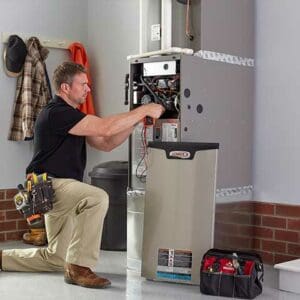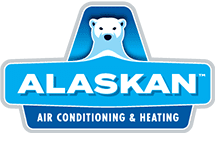
Understanding the Phoenix Climate: Furnace Needs in a Desert Setting
In the vast expanse of the Sonoran Desert lies Phoenix, a bustling metropolitan oasis with a climate that’s a paradox. While one might imagine an unyielding heat throughout the year, Phoenix residents also know the cooler side of the desert. And when temperatures dip, a well-functioning furnace becomes an unspoken hero.
Alaskan Air Conditioning & Heating seeks to shed light on the importance of understanding Phoenix’s desert climate and its implications for furnace needs. With extreme temperature fluctuations, understanding how Phoenix’s desert setting affects furnace functionality and maintenance and furnace repair is essential.
Blazing Summers and Chilly Winters
Phoenix is known for its scorching summers, with temperatures often soaring above 100°F. However, winter nights can be surprisingly cold, sometimes dropping to the 30s and even below freezing on rare occasions. This temperature range presents a unique challenge for furnaces. They’re not just luxury items but necessities to combat the winter chills, especially during the late hours and early mornings.
How the Desert Climate Affects Furnace Functionality
Phoenix, nestled within the heart of the Sonoran Desert, is a city of contrasts. While the searing heat of summer is a defining feature, the city’s cooler winter nights are equally characteristic. This fluctuating Phoenix climate significantly influences the functionality of furnaces, requiring homeowners to be attentive to their heating systems. Alaskan Air Conditioning & Heating delves into the intricate ways the desert environment shapes furnace operation and maintenance needs.
- Dust and Debris Accumulation: The desert winds in Phoenix can carry a significant amount of dust and sand. These particles can easily find their way into furnaces, leading to clogged filters and reduced air circulation. Regular filter replacements or cleanings are vital to keep the system running efficiently.
- Infrequent Usage: Given Phoenix’s predominantly warm climate for most of the year, furnaces might only be used sometimes, as in colder regions. This rare usage can sometimes make specific components less responsive or malfunction when the system is finally turned on during cooler months.
- Temperature Swings: The desert is known for its dramatic temperature variations between day and night. These fluctuations mean that a furnace needs to work harder during the early morning and late nights, even if it remains idle during warmer daytime periods.
Additional reasons why a desert climate affects your furnace:
- Dry Air Concerns: The arid Phoenix climate means the air is typically dry. Furnaces, when heating, can further reduce humidity levels indoors, potentially leading to issues like dry skin, throat, or even woodwork cracking. Homeowners should consider humidifiers in tandem with their heating systems.
- Component Wear and Tear: The unique challenges desert living presents, from dust accumulation to temperature swings, can accelerate the wear and tear on furnace components. Regular inspections are essential to identify and address potential issues before they escalate.
- Energy Efficiency Considerations: Given the relatively short but intense cold spells, homeowners in Phoenix might opt for furnaces with rapid heating capabilities. However, this could sometimes come at the cost of energy efficiency. Balancing the need for quick heating with energy conservation is a challenge shaped by the desert climate.
With its distinct desert characteristics, the Phoenix climate plays a pivotal role in shaping furnace functionality. Recognizing these factors and ensuring appropriate maintenance and adjustments are crucial for optimal performance. Alaskan Air Conditioning & Heating remains committed to assisting Phoenix residents in navigating these challenges, providing warm and comfortable homes regardless of the desert’s whims.
Phoenix Climate and Maintenance Demands in a Desert Setting
The Phoenix climate, characterized by its scorching days and cooler nights, presents a unique set of challenges for homeowners. Maintaining home systems, especially heating and cooling units, becomes paramount in a demanding desert environment. Alaskan Air Conditioning & Heating sheds light on the specific maintenance needs influenced by the distinctive conditions of Phoenix’s desert setting.
- Regular Filter Changes: Dust storms and desert winds bring a torrent of sand and dust particles. Frequent filter changes or cleanings are essential to maintain air quality and system efficiency. A clogged filter not only reduces the efficiency but can also strain the system.
- Sealing Leaks: Given the dryness of the Phoenix climate, ensuring no leaks in your ductwork or around windows and doors is crucial. Any leaks can exacerbate indoor dryness, leading to respiratory discomfort and increased energy costs.
- Cooling System Overhauls: The intense heat demands that air conditioning systems work overtime. Regular checks, coolant level monitoring, and system cleanings will ensure that your AC units are at their peak during those blistering summer months.
- Humidifier Maintenance: Many Phoenix homes use humidifiers to counteract the extreme dryness. Regular cleaning and maintenance of these units are necessary to prevent mold growth and ensure they add the right amount of moisture to the air.
Additional Maintenance demands in a desert setting:
- Furnace Inspections: While furnaces might not be in continuous use due to the warmer climate, when they are needed, they need to function optimally. Annual inspections can help identify potential issues and ensure the furnace operates when temperatures drop.
- Duct Cleaning: Given the dust in the desert setting, duct cleanings become more frequent. Clean ducts ensure better air quality and more efficient cooled or heated air circulation.
- Thermostat Calibrations: With the significant temperature fluctuations typical of the desert, ensuring that your thermostat is calibrated correctly can save energy and maintain indoor comfort. Seasonal calibrations might be necessary to adapt to the changing climate.
- Weatherproofing: The extreme conditions of the Phoenix climate, from intense sun to occasional rain, can wear down the external components of HVAC systems. Regular weatherproofing checks and protective measures can prolong the life of these systems.
The Phoenix climate demands a proactive approach to home maintenance, especially concerning heating and cooling systems. The desert doesn’t forgive neglect. Alaskan Air Conditioning & Heating stands as a beacon of expertise, ensuring Phoenix residents have a sanctuary of comfort amid the desert’s extremes.
The Cost of Delayed Furnace Repairs in Phoenix, AZ
Maintaining a comfortable indoor atmosphere is paramount in Phoenix’s unique desert environment. The Phoenix climate, with its hot days and cooler nights, accentuates the significance of an operational furnace. Yet, many homeowners underestimate the consequences of delaying furnace repairs, leading to a ripple effect of unforeseen costs. Alaskan Air Conditioning & Heating outlines the price of postponing furnace maintenance and repair in this context.
- Increased Utility Bills: When a furnace malfunctions, it often works harder to produce the desired temperature, consuming more energy. This inefficiency quickly translates to higher monthly utility bills.
- Shortened Equipment Lifespan: Continuous operation without addressing underlying issues can wear down the furnace faster. What might have required a simple fix can escalate into a problem that shortens the furnace’s lifespan, demanding a premature replacement.
- Compromised Indoor Comfort: A malfunctioning furnace may struggle to maintain consistent temperatures. This inconsistency can result in chilly spots in some areas and overheating in others, leading to discomfort for the inhabitants.
- Increased Repair Costs: A minor issue can become a significant problem if addressed. By delaying repairs, homeowners might face a much larger repair bill than if the problem was tackled in its infancy.
Additional cost of delayed furnace repairs:
- Health Risks: Furnaces that aren’t functioning can lead to poor indoor air quality. This can exacerbate allergies, lead to respiratory issues, and, in some severe cases, pose risks like carbon monoxide leaks.
- Strain on Other Home Systems: To compensate for a malfunctioning furnace, homeowners might over-rely on other systems like space heaters. If incorrectly used, this can lead to further energy inefficiencies and even pose fire hazards.
- Loss of Warranty: Some furnace warranties have stipulations that require regular maintenance and prompt repairs. Delaying repairs might void the warranty, leading to out-of-pocket expenses for future issues.
- Peace of Mind: Beyond the tangible costs, there’s an intangible price attached to the stress and uncertainty of living with a faulty heating system. The anxiety of potential breakdowns, especially during colder nights, can be unsettling.
While the Phoenix climate may not demand constant use of the furnace, ensuring it’s in top shape when needed is crucial. Delaying repairs can have both immediate and long-term repercussions. Alaskan Air Conditioning & Heating stresses the importance of timely maintenance to avoid these unforeseen costs and to ensure a warm, comfortable home environment.
Embracing the Desert’s Furnace Needs
Phoenix’s desert setting offers a unique blend of beauty and challenges. While the city’s furnace needs might differ from those in more traditional cold regions, the importance of a well-functioning furnace remains the same. With the expertise of Alaskan Air Conditioning & Heating, residents can ensure their furnaces are prepared to face the desert’s dichotomy, providing warmth and comfort during those unexpectedly cold moments.

